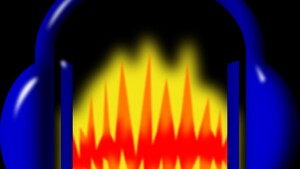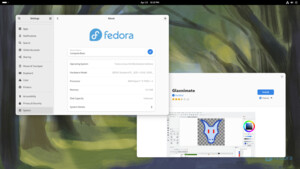Boot Info Script 0.61 [1 April 2012]
============================= Boot Info Summary: ===============================
=> No boot loader is installed in the MBR of /dev/sda.
=> Syslinux MBR (4.04 and higher) is installed in the MBR of /dev/sdb.
sda1: __________________________________________________________________________
File system: ext4
Boot sector type: -
Boot sector info:
Operating System: Linux Mint 18 Sarah
Boot files: /etc/fstab
sda2: __________________________________________________________________________
File system: vfat
Boot sector type: FAT32
Boot sector info: According to the info in the boot sector, sda2 starts
at sector 16001024. But according to the info from
fdisk, sda2 starts at sector 85633024.
Operating System:
Boot files:
sda3: __________________________________________________________________________
File system: swap
Boot sector type: -
Boot sector info:
sda4: __________________________________________________________________________
File system: ext4
Boot sector type: -
Boot sector info:
Operating System:
Boot files: /grub/grub.cfg
sda5: __________________________________________________________________________
File system: ext4
Boot sector type: -
Boot sector info:
Operating System:
Boot files:
sdb1: __________________________________________________________________________
File system: vfat
Boot sector type: SYSLINUX 6.03 2014-10-06................................................2....0............A20 gate n
Boot sector info: Syslinux looks at sector 30530 of /dev/sdb1 for its
second stage. SYSLINUX is installed in the /multiboot
directory. No errors found in the Boot Parameter Block.
Operating System:
Boot files:
============================ Drive/Partition Info: =============================
Drive: sda _____________________________________________________________________
Disk /dev/sda: 465,8 GiB, 500107862016 bytes, 976773168 sectors
Units: sectors of 1 * 512 = 512 bytes
Sector size (logical/physical): 512 bytes / 512 bytes
I/O size (minimum/optimal): 512 bytes / 512 bytes
Disklabel type: gpt
Partition Boot Start Sector End Sector # of Sectors Id System
/dev/sda1 1 976,773,167 976,773,167 ee GPT
GUID Partition Table detected.
Partition Start Sector End Sector # of Sectors System
/dev/sda1 2,048 85,633,023 85,630,976 Data partition (Linux)
/dev/sda2 85,633,024 85,731,327 98,304 EFI System partition
/dev/sda3 928,245,760 954,773,503 26,527,744 Swap partition (Linux)
/dev/sda4 85,731,328 87,488,511 1,757,184 Data partition (Linux)
/dev/sda5 87,488,512 928,245,759 840,757,248 Data partition (Linux)
Drive: sdb _____________________________________________________________________
Disk /dev/sdb: 7,5 GiB, 8010194944 bytes, 15644912 sectors
Units: sectors of 1 * 512 = 512 bytes
Sector size (logical/physical): 512 bytes / 512 bytes
I/O size (minimum/optimal): 512 bytes / 512 bytes
Disklabel type: dos
Partition Boot Start Sector End Sector # of Sectors Id System
/dev/sdb1 * 2,048 15,630,335 15,628,288 c W95 FAT32 (LBA)
"blkid" output: ________________________________________________________________
Device UUID TYPE LABEL
/dev/sda1 90646410-a74c-4474-b54b-cf005f715e07 ext4
/dev/sda2 4E97-CE72 vfat
/dev/sda3 0cfe9b4e-56bb-4955-bb99-30b77414c1ce swap
/dev/sda4 d8107fd7-afa1-4e9e-8d20-1d07499ad981 ext4
/dev/sda5 401e9a93-3091-4682-a0d8-07d365a3a3ba ext4
/dev/sdb1 1EFA-2159 vfat MULTIBOOT
================================ Mount points: =================================
Device Mount_Point Type Options
/dev/sda1 / ext4 (rw,relatime,errors=remount-ro,data=ordered)
/dev/sda2 /boot/efi vfat (rw,relatime,fmask=0077,dmask=0077,codepage=437,iocharset=iso8859-1,shortname=mixed,errors=remount-ro)
/dev/sda4 /boot ext4 (rw,relatime,data=ordered)
/dev/sda5 /home ext4 (rw,relatime,stripe=32744,data=ordered)
/dev/sdb1 /media/bianchi/MULTIBOOT vfat (rw,nosuid,nodev,relatime,uid=1000,gid=1000,fmask=0022,dmask=0022,codepage=437,iocharset=iso8859-1,shortname=mixed,showexec,utf8,flush,errors=remount-ro,uhelper=udisks2)
=============================== sda1/etc/fstab: ================================
--------------------------------------------------------------------------------
# /etc/fstab: static file system information.
#
# Use 'blkid' to print the universally unique identifier for a
# device; this may be used with UUID= as a more robust way to name devices
# that works even if disks are added and removed. See fstab(5).
#
# <file system> <mount point> <type> <options> <dump> <pass>
# / was on /dev/sda1 during installation
UUID=90646410-a74c-4474-b54b-cf005f715e07 / ext4 errors=remount-ro 0 1
# /boot was on /dev/sda4 during installation
UUID=d8107fd7-afa1-4e9e-8d20-1d07499ad981 /boot ext4 defaults 0 2
# /boot/efi was on /dev/sda2 during installation
UUID=4E97-CE72 /boot/efi vfat umask=0077 0 1
# /home was on /dev/sda5 during installation
UUID=401e9a93-3091-4682-a0d8-07d365a3a3ba /home ext4 defaults 0 2
# swap was on /dev/sda3 during installation
UUID=0cfe9b4e-56bb-4955-bb99-30b77414c1ce none swap sw 0 0
--------------------------------------------------------------------------------
=================== sda1: Location of files loaded by Grub: ====================
GiB - GB File Fragment(s)
============================= sda4/grub/grub.cfg: ==============================
--------------------------------------------------------------------------------
#
# DO NOT EDIT THIS FILE
#
# It is automatically generated by grub-mkconfig using templates
# from /etc/grub.d and settings from /etc/default/grub
#
### BEGIN /etc/grub.d/00_header ###
if [ -s $prefix/grubenv ]; then
set have_grubenv=true
load_env
fi
if [ "${next_entry}" ] ; then
set default="${next_entry}"
set next_entry=
save_env next_entry
set boot_once=true
else
set default="0"
fi
if [ x"${feature_menuentry_id}" = xy ]; then
menuentry_id_option="--id"
else
menuentry_id_option=""
fi
export menuentry_id_option
if [ "${prev_saved_entry}" ]; then
set saved_entry="${prev_saved_entry}"
save_env saved_entry
set prev_saved_entry=
save_env prev_saved_entry
set boot_once=true
fi
function savedefault {
if [ -z "${boot_once}" ]; then
saved_entry="${chosen}"
save_env saved_entry
fi
}
function recordfail {
set recordfail=1
if [ -n "${have_grubenv}" ]; then if [ -z "${boot_once}" ]; then save_env recordfail; fi; fi
}
function load_video {
if [ x$feature_all_video_module = xy ]; then
insmod all_video
else
insmod efi_gop
insmod efi_uga
insmod ieee1275_fb
insmod vbe
insmod vga
insmod video_bochs
insmod video_cirrus
fi
}
if [ x$feature_default_font_path = xy ] ; then
font=unicode
else
insmod part_gpt
insmod ext2
set root='hd0,gpt1'
if [ x$feature_platform_search_hint = xy ]; then
search --no-floppy --fs-uuid --set=root --hint-bios=hd0,gpt1 --hint-efi=hd0,gpt1 --hint-baremetal=ahci0,gpt1 90646410-a74c-4474-b54b-cf005f715e07
else
search --no-floppy --fs-uuid --set=root 90646410-a74c-4474-b54b-cf005f715e07
fi
font="/usr/share/grub/unicode.pf2"
fi
if loadfont $font ; then
set gfxmode=auto
load_video
insmod gfxterm
set locale_dir=$prefix/locale
set lang=de_DE
insmod gettext
fi
terminal_output gfxterm
if [ "${recordfail}" = 1 ] ; then
set timeout=30
else
if [ x$feature_timeout_style = xy ] ; then
set timeout_style=hidden
set timeout=0
# Fallback hidden-timeout code in case the timeout_style feature is
# unavailable.
elif sleep --interruptible 0 ; then
set timeout=0
fi
fi
### END /etc/grub.d/00_header ###
### BEGIN /etc/grub.d/05_debian_theme ###
set menu_color_normal=white/black
set menu_color_highlight=black/light-gray
### END /etc/grub.d/05_debian_theme ###
### BEGIN /etc/grub.d/06_mint_theme ###
set menu_color_normal=white/black
set menu_color_highlight=white/light-gray
### END /etc/grub.d/06_mint_theme ###
### BEGIN /etc/grub.d/10_linux ###
function gfxmode {
set gfxpayload="${1}"
if [ "${1}" = "keep" ]; then
set vt_handoff=vt.handoff=7
else
set vt_handoff=
fi
}
if [ "${recordfail}" != 1 ]; then
if [ -e ${prefix}/gfxblacklist.txt ]; then
if hwmatch ${prefix}/gfxblacklist.txt 3; then
if [ ${match} = 0 ]; then
set linux_gfx_mode=keep
else
set linux_gfx_mode=text
fi
else
set linux_gfx_mode=text
fi
else
set linux_gfx_mode=keep
fi
else
set linux_gfx_mode=text
fi
export linux_gfx_mode
menuentry 'Linux Mint 18 Cinnamon 64-bit' --class ubuntu --class gnu-linux --class gnu --class os $menuentry_id_option 'gnulinux-simple-90646410-a74c-4474-b54b-cf005f715e07' {
recordfail
load_video
gfxmode $linux_gfx_mode
insmod gzio
if [ x$grub_platform = xxen ]; then insmod xzio; insmod lzopio; fi
insmod part_gpt
insmod ext2
set root='hd0,gpt4'
if [ x$feature_platform_search_hint = xy ]; then
search --no-floppy --fs-uuid --set=root --hint-bios=hd0,gpt4 --hint-efi=hd0,gpt4 --hint-baremetal=ahci0,gpt4 d8107fd7-afa1-4e9e-8d20-1d07499ad981
else
search --no-floppy --fs-uuid --set=root d8107fd7-afa1-4e9e-8d20-1d07499ad981
fi
linux /vmlinuz-4.4.0-141-generic root=UUID=90646410-a74c-4474-b54b-cf005f715e07 ro quiet splash $vt_handoff
initrd /initrd.img-4.4.0-141-generic
}
submenu 'Advanced options for Linux Mint 18 Cinnamon 64-bit' $menuentry_id_option 'gnulinux-advanced-90646410-a74c-4474-b54b-cf005f715e07' {
menuentry 'Linux Mint 18 Cinnamon 64-bit, with Linux 4.4.0-141-generic' --class ubuntu --class gnu-linux --class gnu --class os $menuentry_id_option 'gnulinux-4.4.0-141-generic-advanced-90646410-a74c-4474-b54b-cf005f715e07' {
recordfail
load_video
gfxmode $linux_gfx_mode
insmod gzio
if [ x$grub_platform = xxen ]; then insmod xzio; insmod lzopio; fi
insmod part_gpt
insmod ext2
set root='hd0,gpt4'
if [ x$feature_platform_search_hint = xy ]; then
search --no-floppy --fs-uuid --set=root --hint-bios=hd0,gpt4 --hint-efi=hd0,gpt4 --hint-baremetal=ahci0,gpt4 d8107fd7-afa1-4e9e-8d20-1d07499ad981
else
search --no-floppy --fs-uuid --set=root d8107fd7-afa1-4e9e-8d20-1d07499ad981
fi
echo 'Loading Linux 4.4.0-141-generic ...'
linux /vmlinuz-4.4.0-141-generic root=UUID=90646410-a74c-4474-b54b-cf005f715e07 ro quiet splash $vt_handoff
echo 'Loading initial ramdisk ...'
initrd /initrd.img-4.4.0-141-generic
}
menuentry 'Linux Mint 18 Cinnamon 64-bit, with Linux 4.4.0-141-generic (upstart)' --class ubuntu --class gnu-linux --class gnu --class os $menuentry_id_option 'gnulinux-4.4.0-141-generic-init-upstart-90646410-a74c-4474-b54b-cf005f715e07' {
recordfail
load_video
gfxmode $linux_gfx_mode
insmod gzio
if [ x$grub_platform = xxen ]; then insmod xzio; insmod lzopio; fi
insmod part_gpt
insmod ext2
set root='hd0,gpt4'
if [ x$feature_platform_search_hint = xy ]; then
search --no-floppy --fs-uuid --set=root --hint-bios=hd0,gpt4 --hint-efi=hd0,gpt4 --hint-baremetal=ahci0,gpt4 d8107fd7-afa1-4e9e-8d20-1d07499ad981
else
search --no-floppy --fs-uuid --set=root d8107fd7-afa1-4e9e-8d20-1d07499ad981
fi
echo 'Loading Linux 4.4.0-141-generic ...'
linux /vmlinuz-4.4.0-141-generic root=UUID=90646410-a74c-4474-b54b-cf005f715e07 ro quiet splash $vt_handoff init=/sbin/upstart
echo 'Loading initial ramdisk ...'
initrd /initrd.img-4.4.0-141-generic
}
menuentry 'Linux Mint 18 Cinnamon 64-bit, with Linux 4.4.0-141-generic (recovery mode)' --class ubuntu --class gnu-linux --class gnu --class os $menuentry_id_option 'gnulinux-4.4.0-141-generic-recovery-90646410-a74c-4474-b54b-cf005f715e07' {
recordfail
load_video
insmod gzio
if [ x$grub_platform = xxen ]; then insmod xzio; insmod lzopio; fi
insmod part_gpt
insmod ext2
set root='hd0,gpt4'
if [ x$feature_platform_search_hint = xy ]; then
search --no-floppy --fs-uuid --set=root --hint-bios=hd0,gpt4 --hint-efi=hd0,gpt4 --hint-baremetal=ahci0,gpt4 d8107fd7-afa1-4e9e-8d20-1d07499ad981
else
search --no-floppy --fs-uuid --set=root d8107fd7-afa1-4e9e-8d20-1d07499ad981
fi
echo 'Loading Linux 4.4.0-141-generic ...'
linux /vmlinuz-4.4.0-141-generic root=UUID=90646410-a74c-4474-b54b-cf005f715e07 ro recovery nomodeset
echo 'Loading initial ramdisk ...'
initrd /initrd.img-4.4.0-141-generic
}
menuentry 'Linux Mint 18 Cinnamon 64-bit, with Linux 4.4.0-140-generic' --class ubuntu --class gnu-linux --class gnu --class os $menuentry_id_option 'gnulinux-4.4.0-140-generic-advanced-90646410-a74c-4474-b54b-cf005f715e07' {
recordfail
load_video
gfxmode $linux_gfx_mode
insmod gzio
if [ x$grub_platform = xxen ]; then insmod xzio; insmod lzopio; fi
insmod part_gpt
insmod ext2
set root='hd0,gpt4'
if [ x$feature_platform_search_hint = xy ]; then
search --no-floppy --fs-uuid --set=root --hint-bios=hd0,gpt4 --hint-efi=hd0,gpt4 --hint-baremetal=ahci0,gpt4 d8107fd7-afa1-4e9e-8d20-1d07499ad981
else
search --no-floppy --fs-uuid --set=root d8107fd7-afa1-4e9e-8d20-1d07499ad981
fi
echo 'Loading Linux 4.4.0-140-generic ...'
linux /vmlinuz-4.4.0-140-generic root=UUID=90646410-a74c-4474-b54b-cf005f715e07 ro quiet splash $vt_handoff
echo 'Loading initial ramdisk ...'
initrd /initrd.img-4.4.0-140-generic
}
menuentry 'Linux Mint 18 Cinnamon 64-bit, with Linux 4.4.0-140-generic (upstart)' --class ubuntu --class gnu-linux --class gnu --class os $menuentry_id_option 'gnulinux-4.4.0-140-generic-init-upstart-90646410-a74c-4474-b54b-cf005f715e07' {
recordfail
load_video
gfxmode $linux_gfx_mode
insmod gzio
if [ x$grub_platform = xxen ]; then insmod xzio; insmod lzopio; fi
insmod part_gpt
insmod ext2
set root='hd0,gpt4'
if [ x$feature_platform_search_hint = xy ]; then
search --no-floppy --fs-uuid --set=root --hint-bios=hd0,gpt4 --hint-efi=hd0,gpt4 --hint-baremetal=ahci0,gpt4 d8107fd7-afa1-4e9e-8d20-1d07499ad981
else
search --no-floppy --fs-uuid --set=root d8107fd7-afa1-4e9e-8d20-1d07499ad981
fi
echo 'Loading Linux 4.4.0-140-generic ...'
linux /vmlinuz-4.4.0-140-generic root=UUID=90646410-a74c-4474-b54b-cf005f715e07 ro quiet splash $vt_handoff init=/sbin/upstart
echo 'Loading initial ramdisk ...'
initrd /initrd.img-4.4.0-140-generic
}
menuentry 'Linux Mint 18 Cinnamon 64-bit, with Linux 4.4.0-140-generic (recovery mode)' --class ubuntu --class gnu-linux --class gnu --class os $menuentry_id_option 'gnulinux-4.4.0-140-generic-recovery-90646410-a74c-4474-b54b-cf005f715e07' {
recordfail
load_video
insmod gzio
if [ x$grub_platform = xxen ]; then insmod xzio; insmod lzopio; fi
insmod part_gpt
insmod ext2
set root='hd0,gpt4'
if [ x$feature_platform_search_hint = xy ]; then
search --no-floppy --fs-uuid --set=root --hint-bios=hd0,gpt4 --hint-efi=hd0,gpt4 --hint-baremetal=ahci0,gpt4 d8107fd7-afa1-4e9e-8d20-1d07499ad981
else
search --no-floppy --fs-uuid --set=root d8107fd7-afa1-4e9e-8d20-1d07499ad981
fi
echo 'Loading Linux 4.4.0-140-generic ...'
linux /vmlinuz-4.4.0-140-generic root=UUID=90646410-a74c-4474-b54b-cf005f715e07 ro recovery nomodeset
echo 'Loading initial ramdisk ...'
initrd /initrd.img-4.4.0-140-generic
}
menuentry 'Linux Mint 18 Cinnamon 64-bit, with Linux 4.4.0-139-generic' --class ubuntu --class gnu-linux --class gnu --class os $menuentry_id_option 'gnulinux-4.4.0-139-generic-advanced-90646410-a74c-4474-b54b-cf005f715e07' {
recordfail
load_video
gfxmode $linux_gfx_mode
insmod gzio
if [ x$grub_platform = xxen ]; then insmod xzio; insmod lzopio; fi
insmod part_gpt
insmod ext2
set root='hd0,gpt4'
if [ x$feature_platform_search_hint = xy ]; then
search --no-floppy --fs-uuid --set=root --hint-bios=hd0,gpt4 --hint-efi=hd0,gpt4 --hint-baremetal=ahci0,gpt4 d8107fd7-afa1-4e9e-8d20-1d07499ad981
else
search --no-floppy --fs-uuid --set=root d8107fd7-afa1-4e9e-8d20-1d07499ad981
fi
echo 'Loading Linux 4.4.0-139-generic ...'
linux /vmlinuz-4.4.0-139-generic root=UUID=90646410-a74c-4474-b54b-cf005f715e07 ro quiet splash $vt_handoff
echo 'Loading initial ramdisk ...'
initrd /initrd.img-4.4.0-139-generic
}
menuentry 'Linux Mint 18 Cinnamon 64-bit, with Linux 4.4.0-139-generic (upstart)' --class ubuntu --class gnu-linux --class gnu --class os $menuentry_id_option 'gnulinux-4.4.0-139-generic-init-upstart-90646410-a74c-4474-b54b-cf005f715e07' {
recordfail
load_video
gfxmode $linux_gfx_mode
insmod gzio
if [ x$grub_platform = xxen ]; then insmod xzio; insmod lzopio; fi
insmod part_gpt
insmod ext2
set root='hd0,gpt4'
if [ x$feature_platform_search_hint = xy ]; then
search --no-floppy --fs-uuid --set=root --hint-bios=hd0,gpt4 --hint-efi=hd0,gpt4 --hint-baremetal=ahci0,gpt4 d8107fd7-afa1-4e9e-8d20-1d07499ad981
else
search --no-floppy --fs-uuid --set=root d8107fd7-afa1-4e9e-8d20-1d07499ad981
fi
echo 'Loading Linux 4.4.0-139-generic ...'
linux /vmlinuz-4.4.0-139-generic root=UUID=90646410-a74c-4474-b54b-cf005f715e07 ro quiet splash $vt_handoff init=/sbin/upstart
echo 'Loading initial ramdisk ...'
initrd /initrd.img-4.4.0-139-generic
}
menuentry 'Linux Mint 18 Cinnamon 64-bit, with Linux 4.4.0-139-generic (recovery mode)' --class ubuntu --class gnu-linux --class gnu --class os $menuentry_id_option 'gnulinux-4.4.0-139-generic-recovery-90646410-a74c-4474-b54b-cf005f715e07' {
recordfail
load_video
insmod gzio
if [ x$grub_platform = xxen ]; then insmod xzio; insmod lzopio; fi
insmod part_gpt
insmod ext2
set root='hd0,gpt4'
if [ x$feature_platform_search_hint = xy ]; then
search --no-floppy --fs-uuid --set=root --hint-bios=hd0,gpt4 --hint-efi=hd0,gpt4 --hint-baremetal=ahci0,gpt4 d8107fd7-afa1-4e9e-8d20-1d07499ad981
else
search --no-floppy --fs-uuid --set=root d8107fd7-afa1-4e9e-8d20-1d07499ad981
fi
echo 'Loading Linux 4.4.0-139-generic ...'
linux /vmlinuz-4.4.0-139-generic root=UUID=90646410-a74c-4474-b54b-cf005f715e07 ro recovery nomodeset
echo 'Loading initial ramdisk ...'
initrd /initrd.img-4.4.0-139-generic
}
}
### END /etc/grub.d/10_linux ###
### BEGIN /etc/grub.d/10_lupin ###
### END /etc/grub.d/10_lupin ###
### BEGIN /etc/grub.d/20_linux_xen ###
### END /etc/grub.d/20_linux_xen ###
### BEGIN /etc/grub.d/20_memtest86+ ###
menuentry 'Memory test (memtest86+)' {
insmod part_gpt
insmod ext2
set root='hd0,gpt4'
if [ x$feature_platform_search_hint = xy ]; then
search --no-floppy --fs-uuid --set=root --hint-bios=hd0,gpt4 --hint-efi=hd0,gpt4 --hint-baremetal=ahci0,gpt4 d8107fd7-afa1-4e9e-8d20-1d07499ad981
else
search --no-floppy --fs-uuid --set=root d8107fd7-afa1-4e9e-8d20-1d07499ad981
fi
knetbsd /memtest86+.elf
}
menuentry 'Memory test (memtest86+, serial console 115200)' {
insmod part_gpt
insmod ext2
set root='hd0,gpt4'
if [ x$feature_platform_search_hint = xy ]; then
search --no-floppy --fs-uuid --set=root --hint-bios=hd0,gpt4 --hint-efi=hd0,gpt4 --hint-baremetal=ahci0,gpt4 d8107fd7-afa1-4e9e-8d20-1d07499ad981
else
search --no-floppy --fs-uuid --set=root d8107fd7-afa1-4e9e-8d20-1d07499ad981
fi
linux16 /memtest86+.bin console=ttyS0,115200n8
}
### END /etc/grub.d/20_memtest86+ ###
### BEGIN /etc/grub.d/30_os-prober ###
### END /etc/grub.d/30_os-prober ###
### BEGIN /etc/grub.d/30_uefi-firmware ###
### END /etc/grub.d/30_uefi-firmware ###
### BEGIN /etc/grub.d/40_custom ###
# This file provides an easy way to add custom menu entries. Simply type the
# menu entries you want to add after this comment. Be careful not to change
# the 'exec tail' line above.
### END /etc/grub.d/40_custom ###
### BEGIN /etc/grub.d/41_custom ###
if [ -f ${config_directory}/custom.cfg ]; then
source ${config_directory}/custom.cfg
elif [ -z "${config_directory}" -a -f $prefix/custom.cfg ]; then
source $prefix/custom.cfg;
fi
### END /etc/grub.d/41_custom ###
--------------------------------------------------------------------------------
=================== sda4: Location of files loaded by Grub: ====================
GiB - GB File Fragment(s)
=============================== StdErr Messages: ===============================
cat: /tmp/BootInfo-DgOJZR6D/Tmp_Log: No such file or directory
cat: /tmp/BootInfo-DgOJZR6D/Tmp_Log: No such file or directory



